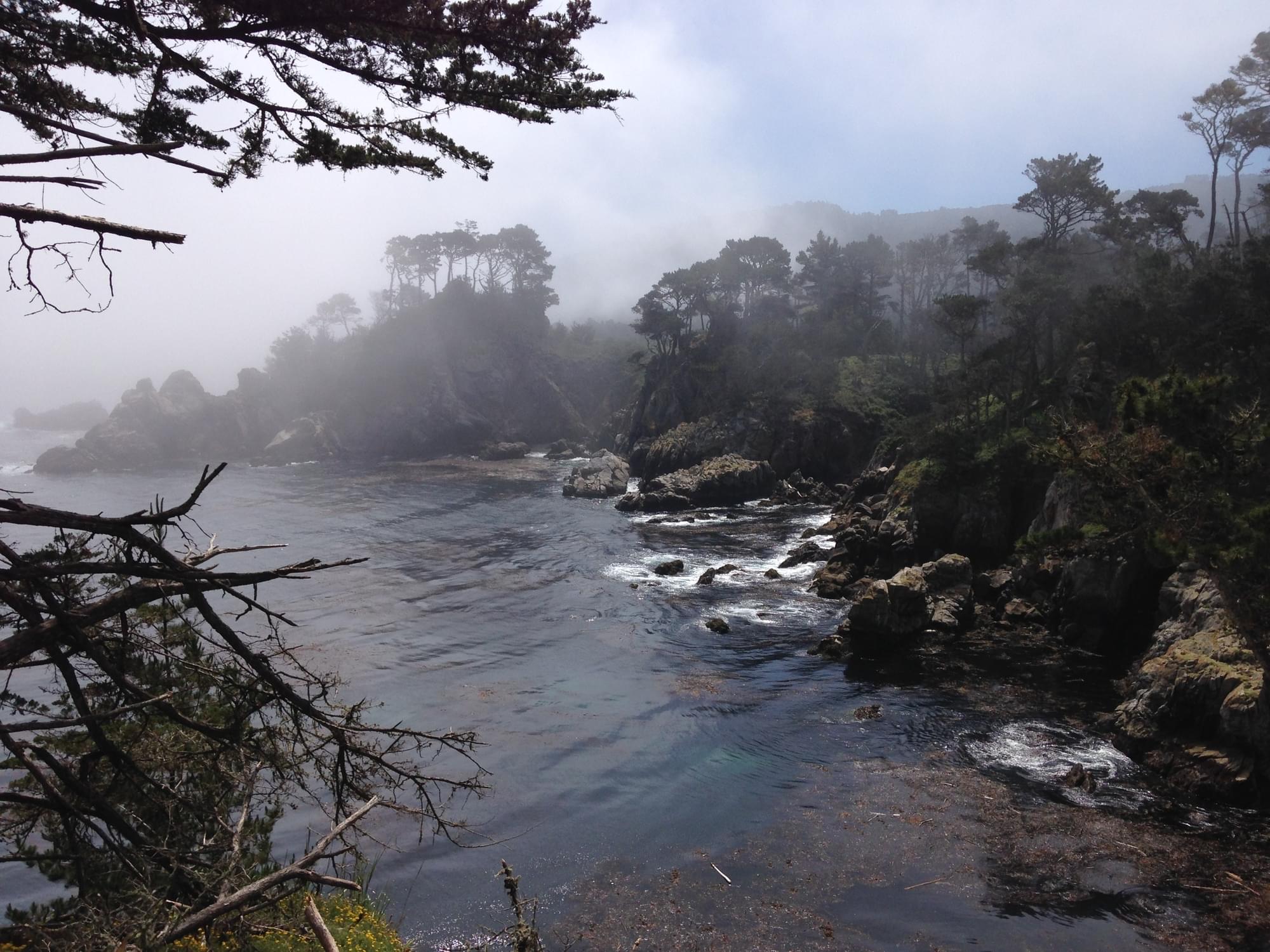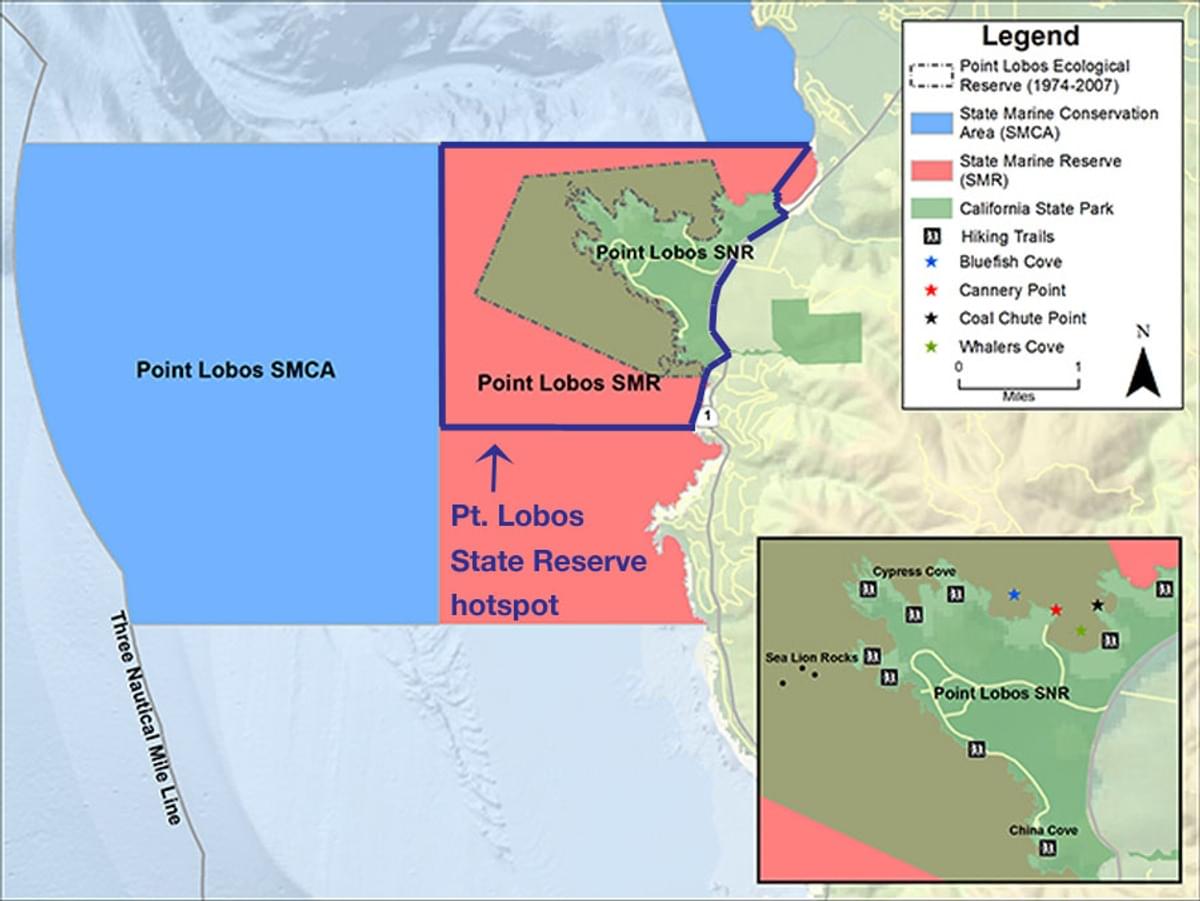Pt. Lobos State Reserve

Pt. Lobos State Reserve
Carmel-by-the-Sea, California 93923
California State ParksPoint Lobos Foundation
Tips for Birding
Point Lobos California State Natural Reserve in an internationally popular location, with amazing views of the Pacific Ocean and is often referred to as “The crown jewel of the California State Parks System”. Bring your binoculars and your camera, and plan to spend at least 3-4 hours exploring this marvelous intersection of land and sea.
There are a few important tips for the visitor:
- Arrive early if possible since this well-known Reserve is extremely popular. Parking is quite restricted, so many visitors must park on Highway 1 once the limited spaces are filled. $10.00 entrance fee for cars, $9.00 for Seniors, Free for walk-in visitors.
- Point Lobos is a Reserve and NOT a Park, so one must stay on the trails, there are no food services, and dogs are not allowed. Enjoy your food in one of the three lovely picnic areas, but not on the trails. Service dogs are allowed; please register them with the Kiosk Staff at the entrance.
- Summer hours are 8:00 a.m. to 7:00 p.m. and winter hours are 8:00 a.m. to 5:00 p.m.
Maps are posted by the restrooms, and the Information Station and the Whaler’s Cabin are staffed with volunteers from 9:00 a.m. to 5:00 p.m. They can help direct you to the trails of your choice.
Relevant links:
Point Lobos State Natural Reserve Website
Point Lobos Foundation Website (lists scheduled walks. Often the walks are general, but may include birding, geology, local artists, poetry, etc).
Birds of Interest
Well over 200 birds have been recorded in the Reserve; with the diversity of habitat, some are more prevalent in different regions of the Reserve. Birding is good throughout the year, and spring brings the breeding birds who frequently nest in proximity to its many trails and viewpoints. You will find many resident species as well, including two pairs of Peregrine Falcons who nest in the area. Across the Reserve you can find Brown Pelicans roosting on the rocks, Western Gulls, Black Phoebes, Turkey Vultures, Bushtits, Anna’s Hummingbirds, White-crowned Sparrows, California Scrub-Jays, Great Blue Herons, and more. The three local cormorants, Brandt’s, Pelagic, and Double-crested, have their favorite locations, but their abundance is in that order.
There are different trails and parking lots, so the following are itemized to let you decide how to prioritize your visit.
1. The Cypress Cove/Sea Lion Point parking by the Information station is the first to fill up, so it is a good place to start if you arrive early. In addition to the diversity of birds, scan the waves and kelp for Southern Sea Otters, Harbor Seals, and California Sea Lions. The 0.8-mile Cypress Cove Trail is the most impressive, with rocky outcroppings and the majestic and rare Monterey Cypress. For 2021 and 2022, a Peregrine Falcon pair nested on one of the islets off the Cypress Cove trail, and successfully fledged two offspring. The rocks and trees yield a nice variety of species of birds as well as wildflowers. The 0.5-mile Sea Lion Point Trail (ADA compliant), leaves from the same parking lot, and the Coastal Scrub habitat is inhabited by the resident White-crowned Sparrow, and a California Thrasher if you are lucky. Pelagic Cormorants and Pigeon Guillemots nest in cubby-holes and rocky cracks in the Carmelo Formation. Look for loons, gulls, seabirds from the trail which overlooks the Pacific as well as smaller more protected coves.
2. The Bird Island Trail is 0.8 Miles and ADA-compliant and starts from the Bird Island Parking lot. A Peregrine Falcon pair “owns” the Bird Island area and are the easiest falcons to spot since they frequent the dead Monterey Pine snags above the Bird Island smorgasbord. The offshore islets will bring in breeding Brandt’s Cormorants by the hundreds if not thousands. Brown Pelicans roost on the rocks, nesting Black-crowned Night-herons nest as do Pigeon Guillemots and Black Oystercatchers. Watch for swallows, swifts, nuthatches, and warblers in the spring.
3. Whalers Cove Parking Lot is the best spot for the over-wintering Heermann’s Gull. Walk up the steep stone staircase to the small Cannery Point loop. In winter this is the best spot to find the Black Oystercatchers. Gregarious in the winter, they congregate on the rocks off the point. They get noisier and territorial once breeding begins and they spread through the Reserve to their favorite spots. Go up the road from the parking lot to visit the Whalers Cabin. Check the rocks for Double-crested Cormorants and egrets, scan the cove, then walk the ADA-compliant Granite Point Trail where a Red-shouldered Hawk patrols the small coastal meadow. The ADA Carmelo Meadows Trail is the best spot for wintering Townsend’s Warbler, migrating warblers, Hermit Thrush, Bewick's Wren, Brown Creeper, and wintering Golden-crowned Sparrow. Three to four pairs of Great Blue Heron will nest in the Monterey Pines on Cannery Point and Pelagic Cormorants nest on the sandstone and are present year-round. You may happen upon an Osprey or White-tailed Kite, and Steller’s Jay. The Cove may have Eared Grebes, Red-breasted Mergansers, or one or more of the loon species. Take one or both of two rocky trails, the Coal Chute Point Trail and the Granite Point Trail. Both have wonderful views and different habitat.
4. Other trails include the Mound Meadow, Pine Ridge, Whaler’s Knoll, and South Plateau Trails which wander through mixed pine-oak forest where the various woodpecker species and forest birds congregate. A stroll on the North Shore Trail is the best place to find California Quail.
About this Location
The entire Reserve is contained in one Hotspot which include the State Reserve and a portion of the Pt. Lobos State Marine Reserve. The inland border mostly follows Highway 1. See the second map here for more details; some portions of the State Marine Reserve that exists south of the State Reserve is excluded, as is the inner bay adjacent to Monastery Beach (a separate hotspot).
The Pt. Lobos Reserve hotspot has a diversity of habitats from Monterey Pine Forest, Monterey Cypress Forest, Northern Coastal Scrub, Northern Coastal Prairie, and the underwater Kelp Forest. A reasonable walk can bring you in view of these habitats. Each trail has its own delights, so plan to spend some time exploring.
Notable Trails
See above for descriptions of some of these trails. Not all trails are listed here:
Cypress Grove Trail (0.8 miles)
Sea Lion Point/Sandhill Point Trail (ADA) (0.5 Miles)
Bird Island Trail (ADA) (0.8 Miles)
Coal Chute Point Trail
Carmelo Meadows, and Lace Lichen Trails (ADA)
Granite Point Trail (first section is ADA; the point is very rocky)
Cannery Point Trail
North Shore Trail
South Shore Trail
Features
Restrooms on site
Wheelchair accessible trail
Entrance fee
Roadside viewing
Content from California State Parks, Point Lobos Foundation, and Carol Greenstreet
Last updated March 21, 2023
 Hotspot boundaries in dark purple; click to enlarge. An inset at lower right shows the locations of restrooms at Pt. Lobos Reserve and some points of interest.
Hotspot boundaries in dark purple; click to enlarge. An inset at lower right shows the locations of restrooms at Pt. Lobos Reserve and some points of interest.California State Marine Reserves